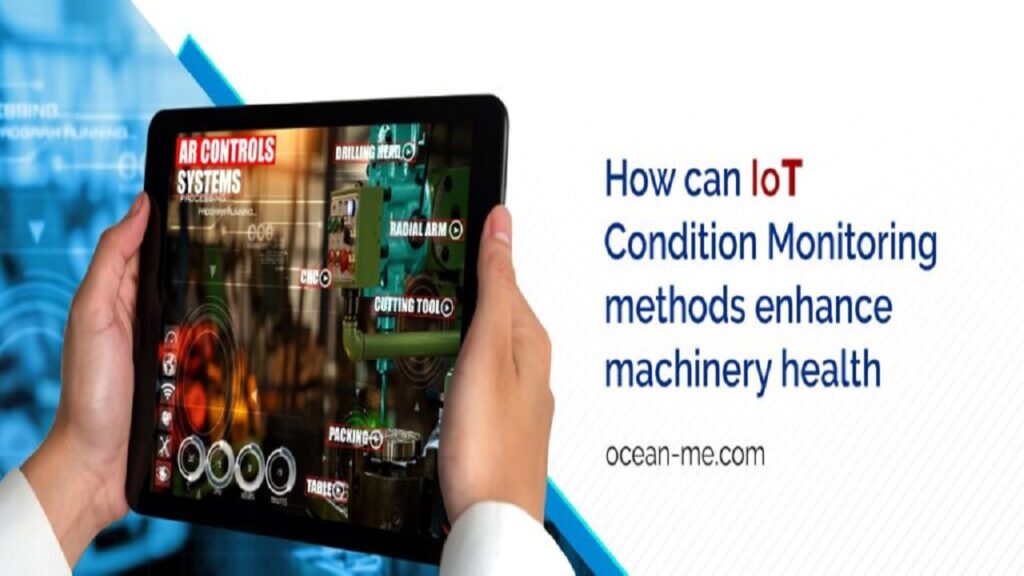A key goal of production is to maintain high quality levels of the product. Nonetheless, for several organisations, this goal still seems far-fetched. Issues with the quality of a product are usually not noticed until it fails a test or, worse, until a customer returns it or creates a problem. The poor quality of a product is primarily caused by faulty parts that haven’t been regularly maintained or certified. As a result, manufacturers are increasingly embracing IoT-driven machine status monitoring because it allows early identification of mechanical issues that can jeopardise product quality.
What Is IoT Condition Monitoring Methodology?
IoT Condition Monitoring is a key component of the maintenance process for production machines. It focuses on intake, production, and impacts to track any problems or ongoing wear and tear. In addition, the monitoring programme emphasises using extensive information gathered from the network and detectors to analyse, evaluate, and provide insights into your industrial machines.
Read more about:
- The Importance of Vibration Analysis in Maintenance
- Radio remote control for EOT crane
- Cloud-based Vibration Monitoring: A Defence Against Unplanned Downtime in Machines
Parameters of the IoT Condition Monitoring Test
- Speed
- Vibration pattern
- Lubricant Assessment
- Ultrasonic Emissions
- Environmental aspects such as air pressure and temperature levels.
What Purpose Does IoT Have in Condition Monitoring?
- All data is directed to the server with the assistance of IoT for further evaluation. This will make a functional, rapid, and safe management solution feasible.
- IoT in condition monitoring is used to link all the components in the machine and ensure a smooth operation.
- It manages and monitors the capacity and effectiveness of the machine.
- Motors, belts, compressors, blowers, loaders, and valves, among other significant and potent machinery, are kept in control.
- With the advent ofIoT condition monitoring, manual machinery examination is no longer required.
- Due to the potential of IoT, enterprises do not have to examine and supervise each and every device separately.
- Additionally, this has benefits for flexibility, interconnectivity, and time efficiency.
- It provides complete online surveillance and security services.
Pros of IoT Condition Monitoring
- It provides consistent operational conditions.
- Effectively controls the periodic maintenance for each individual piece of machinery.
- Detects errors early enough for accurate correction.
- Explores new upgrades and licence revisions.
- Guarantees operational security.
- Helps to control and maintain employee access to the machinery.
- Increases results.
Applications of IoT Condition Monitoring in Various Industries
Businesses in the paper industry can monitor the condition of the rollers in paper production owing to industrial IoT facilities. The texture of the paper, the amount of squishing, and the density of the paper can all be affected by any inaccuracy in a single roller component. By incorporating vibration sensors for monitoring into the paper roller bearings, a considerable number of product defects could be averted.
Temperature fluctuations in welding machines can lead to a damaged weld bond in the automotive industry, and water seeping into cracks and holes in bonded areas can lead to leakage. Implementing industrial IoT to track the humidity and temperature level around machinery may drastically decrease inaccurate positioning and ensure the excellent performance of the welded items.
Improving Product Quality Control by Using IoT
By detecting various machine key metrics, including operating temperature, spindle frequency of vibration, rate, depth of cut, and environmental variables, including relative humidity and temperature, and condition monitoring helps you improve quality control. The production quality of machinery may be impacted by the combination of all of the above-said factors.
Inference
Although IoT condition monitoring provides the opportunity for greater production quality standards, this approach has some downsides because exact quality management may not be detected without proper information about the machine’s current state. IoT-driven condition monitoring has the potential to oversee and track a machine’s functionality. With the help of CPS, detectors, and technology, you may collect a lot of information. With this much information, a machine learning system for proactive maintenance can be developed. With actual statistics, remedies, and visibility, organisations can easily predict equipment downtime. This will end any potential operational breakdown or interruption.
Checking machinery conditions, for example, won’t reveal issues caused by the use of poor quality or incorrectly labelled parts or improper material management. Whatever the time frame, it is essential to continuously and regularly check the equipment for impurities, irrespective of whether it is prone to wear and tear or needs quick improvement. The Internet of Things and condition monitoring speed up your efforts. It also provides excellent solutions with a great degree of protection. By monitoring the condition of the machinery used to produce them, product quality can be maintained to boost production, lower waste, and minimise reworking.
Compared to other quality management approaches, the IoT condition monitoring technique might not offer as much diversity in terms of the quality assurance scope. Still, it can help discover quality problems earlier on and identify possible concerns.



